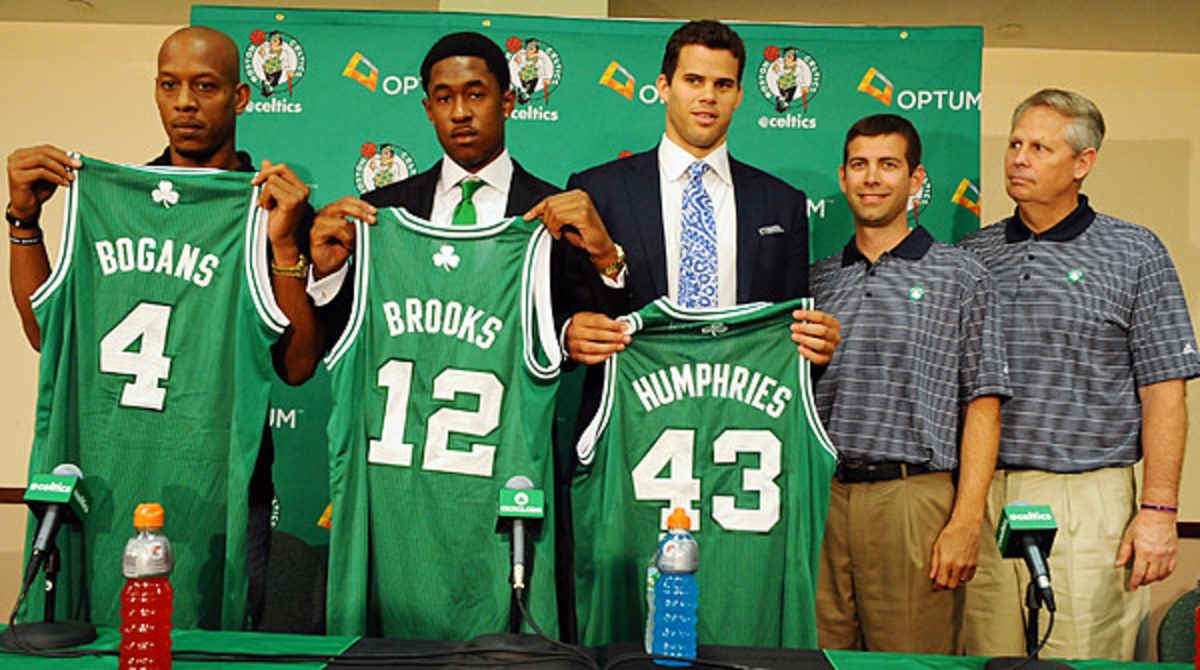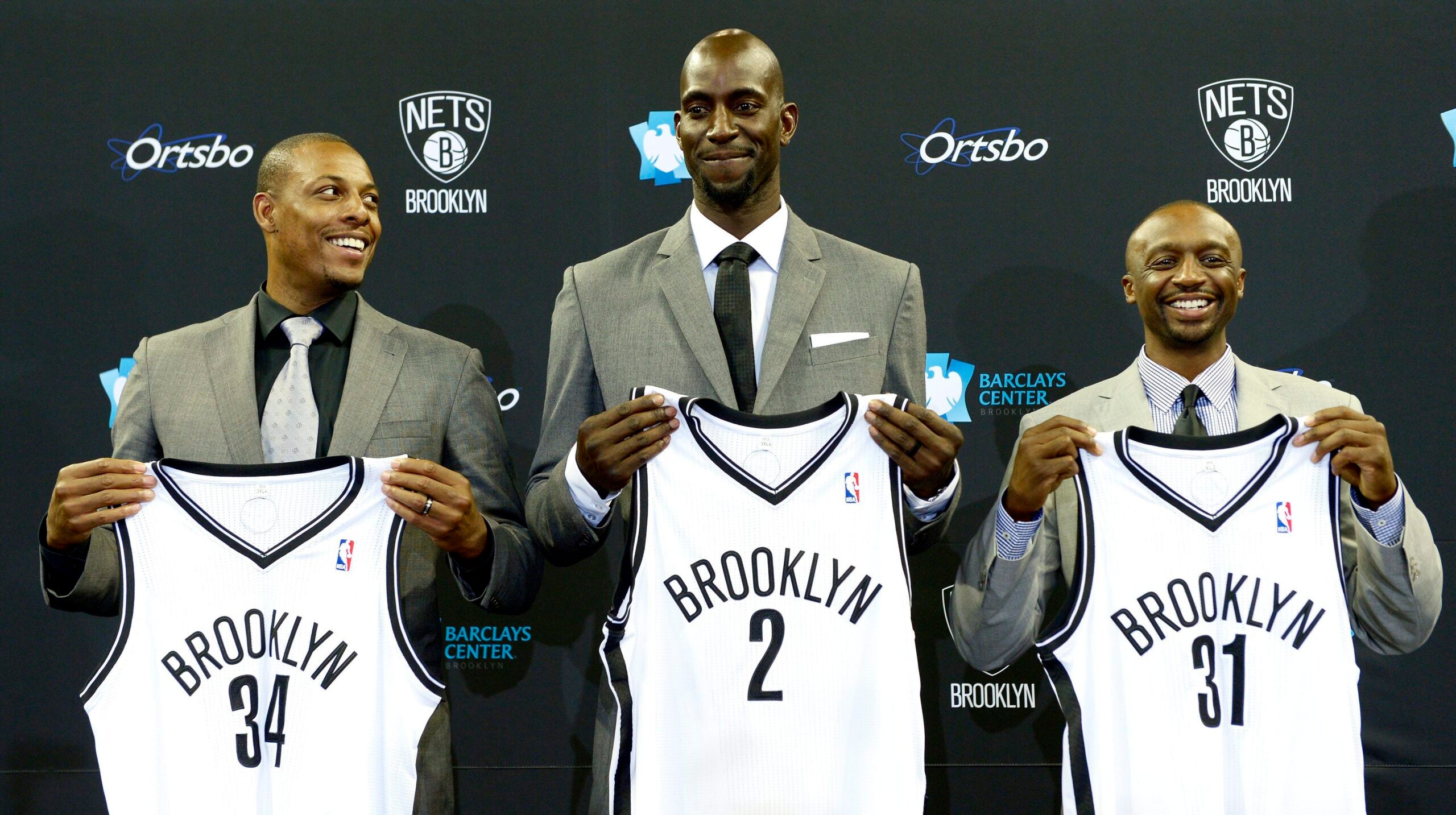-
Boston Tear Party: How Close the Celtics’ Impressive Rebuild is to a Ringless Result

CHAPTER 1: The Fall
The decision to rebuild is never an easy one to overtake for any sports organization. Ideally, every team is able to keep their players that they drafted, nurtured and hopefully won a championship or five with but that’s simply not the case.
There comes times where a team looks at their aging core and decides that looking toward the future will better aid their prospects at success in the long run.
For the Boston Celtics, their “Big 3” consisting of Kevin Garnett, Paul Pierce and Ray Allen had already dissolved after five seasons in the 2012 offseason.
Ray Allen departed in free agency after seeing his role decrease and joined LeBron and friends in Miami to earn his second ring, a result that the original Celtic core could not achieve together.
The Big 3’s championship in 2008 represented an immediate payoff for the new formula in NBA team building for architect Danny Ainge. Trading recently young drafted players for established veteran stars from Seattle and Minnesota respectively led the biggest single season turnaround in NBA history.
As Doc Rivers was showered in red Gatorade in Game 6 of the 2008 Finals against the bitter rival Lakers, the Celtics’ Big 3 seemed poised to dominate the NBA for years to come.
Fast forward five seasons, the once promising, albeit aging trio only reached one more NBA Finals after losing to the Magic in 2009, the Lakers in 2010 and Lebron’s new Big 3 in Miami in both 2011 and 2012.
After a third of their trio left, the Celtics committed to offloading the other two of their former stars in their career twilights.
The Brooklyn Nets, recently purchased by Mikhail Prokhorov as new owner, wanted to make a big splash for their recent relocation from New Jersey to the city.

Nets GM Billy King obliged with a cannonball into Boston’s pool of talent, trading for Garnett, Pierce and Jason Terry for Kris Humphries, Gerald Wallace, Marshon Brooks, Keith Bogans, Kris Joseph and the Nets’ first round draft picks in 2014, 2016 and 2018 with another option to swap first round pick slots in 2017.
Boston’s heroes from a previous era now departed to the land of Jay-Z with older veterans of lesser talent coming back to Beantown. Critics of the deal said the Celtics made a mistake and betrayed the winning tradition of Boston sports in their recent past.
Who those draft selections for Boston eventually became today makes the optics of said trade look much better for the Celtics, but at the time the immediate future meant losing games. And a lot of them.
2013-14
Boston’s rebuild didn’t just happen on the court with their players, but with their leader on the sidelines too. Doc Rivers expressed disinterest in coaching a rebuilding roster so the Celtics traded him to the Clippers’ Lob City team for another first round pick.
Rivers’ replacement would be Brad Stevens, former head coach at Butler University who made two straight national championships with star Gordon Hayward.
Stevens inherited a roster headed by All-Star point guard Rajon Rondo coming off an ACL tear, forward Jeff Green who was part of the original trade to bring Ray Allen to Seattle as part of the Big 3 and Avery Bradley, a young combo guard who’s defensive prowess earned him enough trust to replace Allen in the starting lineup in 2012.
Young talents in Jared Sullinger and recent draft pick Kelly Olynyk put up decent numbers, but nothing to remind Boston fans of the old core’s previous successes in the win column.
After reaching the playoffs in six consecutive seasons, the Boston Celtics missed the postseason with a 25-57 win-loss record. A mismatched roster of young players developing over various playtime and older veterans playing for mainly empty stats led to their worst record since before the Big 3 formed.
:format(webp)/cdn.vox-cdn.com/uploads/chorus_image/image/29813575/20121101_kkt_su8_1186.0.jpg)
Rondo returned to the court averaging nearly 12 points and 10 assists in 30 games which were decent numbers off a major injury but nowhere near his previous All-NBA form in years past.
Jeff Green started all 82 games and led the team in scoring with under 17 a game in his own impressive return two years removed from open heart surgery.
Bradley showed flashes as the second option on team averaging 15 a game on nearly 40% from the 3-point line, but none of these contributions led to a playoff appearance.
Despite their on-court production being lackluster from the Nets’ returning pieces and those on the team already, such a result gave Boston the sixth pick in the 2014 NBA draft.
Boston took Oklahoma State guard Marcus Smart with the selection who’s calling card was decent, even if inefficient scoring and scrappy hard-nosed defense (with some flopping).
With their pick they received from the Nets at 17th overall, they took Kentucky product James Young in the most recent NBA draftee from the blue blood talent factory under the tutelage of one John Callipari.
In free agency the Celtics subtracted veterans Jerryd Bayless and Brooklyn trade return Kris Humphries. On the topic of Brooklyn, Boston played a role in trading veteran point guard Jarrett Jack to the Nets while receiving back Tyler Zeller and Marcus Thorton.
Overall uninspiring moves on the surface but the Celtics knew about a future outlook over anything else.
Start of 2014-2015 Trade Deadline
Coach Brad Stevens led a mostly similar roster to a 9-14 record up to December 17 in the ’14-’15 season. The up and down start came with new addition Evan Turner into the lineup, but a mediocre beginning to the season at best signaled that more changes were needed for the roster.
The next day on December 18, the Boston Celtics shipped off the last remaining piece connected to their old Big 3 glory days. Rondo and Dwight Powell were traded to the Dallas Mavericks for Jae Crowder, Jameer Nelson, Brandan Wright and draft picks.
The Celtics’ steady point guard for eight seasons headed to Texas to continue his career while Boston continued their rebuilding process. Jeff Green was shipped off to Memphis in another move by the Cs.
Come the trade deadline, Boston wouldn’t improve their roster significantly outside of one specific piece. Other than offloading more veterans for new ones and ultimately finished the year with a 40-42 record.Despite a sub-.500 record, the Celtics made the playoffs as the seventh seed in the East, ironically ahead of the Brooklyn Nets at eighth who went 38-44 in an even worse showing.
Bradley, fresh off of a new $32 million extension for four years, put up 14 points and 35% from 3 as part of the Celtics’ new young core. Brandon Bass was part of the Celtics’ 2012 team and continued to put up decent numbers while playing all 82 games with 10 points and four rebounds.
Jae Crowder came to Boston as part of the Rondo deal and contributed nearly 10 points a game off of the bench with defensive skills.
Marcus Smart’s rookie year was rough from a shooting perspective, but showed all around statistical contribution with eight points, three boards and assists as well as 1.5 steals per contest.Yet, none of these players contributed to the Celtics’ rapid rise up the standings from 14 games under .500 in February to the team’s first playoff berth since losing the whole Big 3 as heavily as one man.
As the saying goes, big things can come in small packages.
